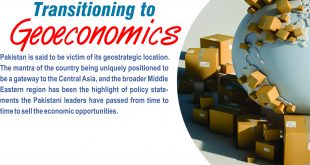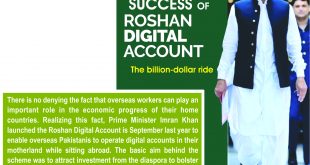Recently, a former military dictator Pervez Musharraf made headlines. In an interview with BBC, he lauded the rules of former military dictators, saying, “Dictators set the country right … [and] military rule always brought progress to Pakistan.”
Of course, he lied. But there is another trumped-up story, far terrible, told also by a former and the first military dictator, Ayub Khan. Implying in a way as if he was a true statesman, Ayub Khan once discredited the institution of democracy in Pakistan. Before his impaired judgement, democracy was a luxury that Pakistan could hardly afford. Of course, he too lied. Democracy has never been a luxury for Pakistan: given the country’s socio-political and economic dynamics and its geopolitical sitting in a zone largely dotted with diverging and confrontational wires of global power politics, democracy has always been imperative and dispensable for Pakistan.
Pakistan is a multilingual, multiethnic and multicultural country. The interplay of all these forces makes it culturally rich and diverse. With the exception of some religious minorities, population of the country is linked to their religion – Islam. Apart from a common religion, the links that are associated with common history and language are very weak – or even missing – among the Pakistanis. The culture of ethnic groups in Pakistan has been greatly influenced by many of its neighbours; being part of the Indian subcontinent, many aspects of its culture, from foods to dresses and from artefacts to handicrafts and cuisines, present a striking resemblance to those on the other side of the Radcliffe Line. On the one hand, the Pashtun culture is immensely linked, historically and emotionally, to their ethnic counterparts in Afghanistan. Similarly, the Shiites, which form a large part of Pakistani society, and the Baloch have many cultural linkages with the people of Iran.
Language is the basis of ethnicity in Pakistan. The languages claimed as mother tongue include Urdu, Punjabi, Sindhi, Pashto, Balochi, Seraiki, Kashmiri, Brahui, Hindko and Pothwari. Each of the country’s principal languages has a strong regional focus. The linguistic divide is so strong that even the provinces are named after the major languages and/or ethnic groups.
From here emerges a great challenge for Pakistan: preserving this cultural diversity and turning it into a factor for national unity. However, so far, all the cultural differences and variations generated systemic fault lines and, on time and occasions, have been instrumental in impeding the process of formation of a single distinct cultural entity. Here, it seems needless to mention that the loyalty of our successive military dictators to their own pockets and power, and their insensitiveness to ethnic fault lines played a leading role in fragmentation of society and creating cultural particularism.
Outwardly, Pakistan is a giant state. Counting on its geopolitical and strategic terms, Pakistan can be regarded as one of the most pivotal states of the world. The country holds an impressive geography; so impressive that even its significance in the region and beyond is counted mostly not because of what it has achieved but because where it is located. Its area stretches from the Arabian Sea in the south to Greater Himalayas in the northeast where its borders meet the Middle Kingdom. To its west, lies Afghanistan – the graveyard of empires – and Iran, and in the east, is India. In the centre of the country are great plain areas of Punjab which extend south into Sindh.
This distinct geographical feature serves as a great pull factor for peoples, goods and money. The plain is irrigated by a massive system of canal water originating from Indus Basin that is consisted of the mighty Indus River and its several tributaries. The plain breaks in the south in Sindh at Thar Desert. The south reach of the country is made up of an extended coastline on the Arabian Sea, one of the world’s busiest waterways. The coastline, with its deep, hot water ports, marks another area of geographic distinctions that push together trade, economic and industrial activities – resultantly, Karachi is the most populous city of Pakistan.
Given Pakistan’s history of partition from India, and its location along great arteries of regional conquest and commerce, the heart of Pakistan’s problem has always been the same: insecurity. Along with sprawling deserts of Cholistan and Thar and a rugged topography marked with high mountains at some places, the country also shares a large plain area with India. Its major centres of population, communication and irrigation are present within close range of Indian army’s watch. Its borders with other neighbours are protected, seemingly, by natural barriers, but, historically, the mountainous passes have always served as great highways for military invasions and commercial inroads. Moreover, there is another important factor that adds insecurity to the country: its shape, which is truncated. Pakistan thus lacks strategic depth.
Being part of South Asia, sharing a reasonably long border with China and being located at the junction of Central Asia and the Middle East, expose Pakistan to several vulnerabilities, thus leaving it with no other choice but to remain extremely active and vigilant. In simple and plain terms, it means that the only choice that Pakistan has got is to remain intensely watchful and hyper-efficient. In a little elaborate manner, it also means that Pakistan has to compete (economically) with everyone, at every time.
However, historically, Pakistan neither remained completely watchful nor efficient. Moreover, as Pakistan continues to grow old in years, what endures with time is an unceasing perpetuation of a severe disconnect between its economic and military developments.
Hence, the questions: Why did Pakistan fail to boost efficiency so critical to its survival? Why there is an alarming level of disconnect between its military and economic might? What were the factors that made Pakistan deviate? And, so on.
For trade, communication and technological developments, Pakistan is a perfect place – and from these activities, thus, the generation and accumulation of wealth. However, reverse is apparent in Pakistan. But it isn’t as much of a surprise. Mix features that serve as bedrocks for development and prosperity with a history of violent political disruptions, and Pakistan becomes what it is today: barely surviving and that too with a marked degree of violence and intolerance.
As pointed out earlier, democracy has never been a luxury for Pakistan. It has always been the country’s political, economic and strategic imperative. Pakistan needs a class of vigorous, free commoners, and only democracy can ensure it. Democracy extends political liberty toward civilians that, in turn, leads to expansion of personal freedoms. Here is the necessity and inevitability of the institutional apparatus of democracy. Without this formal and mature machinery of democratic statecraft, personal freedoms to individuals can never be guaranteed.
The major issue for Pakistan is not about what threats it faces or whether majority of its people are poor and unemployed, but whether its people have the required institutional guarantees toward freedom and dignity. If yes, the society of Pakistan will become the most prolific and useful.
 Jahangir's World Times First Comprehensive Magazine for students/teachers of competitive exams and general readers as well.
Jahangir's World Times First Comprehensive Magazine for students/teachers of competitive exams and general readers as well.



